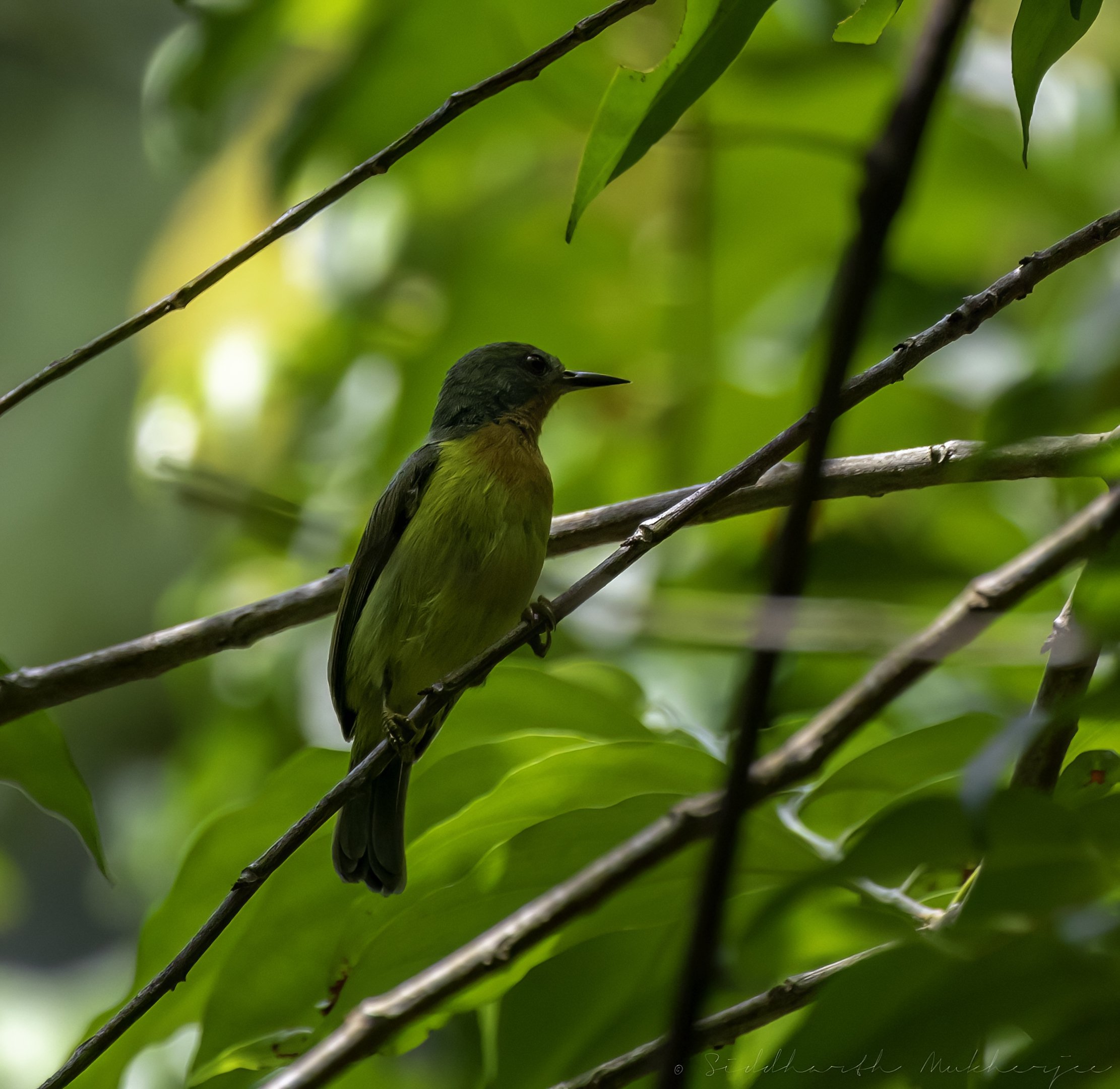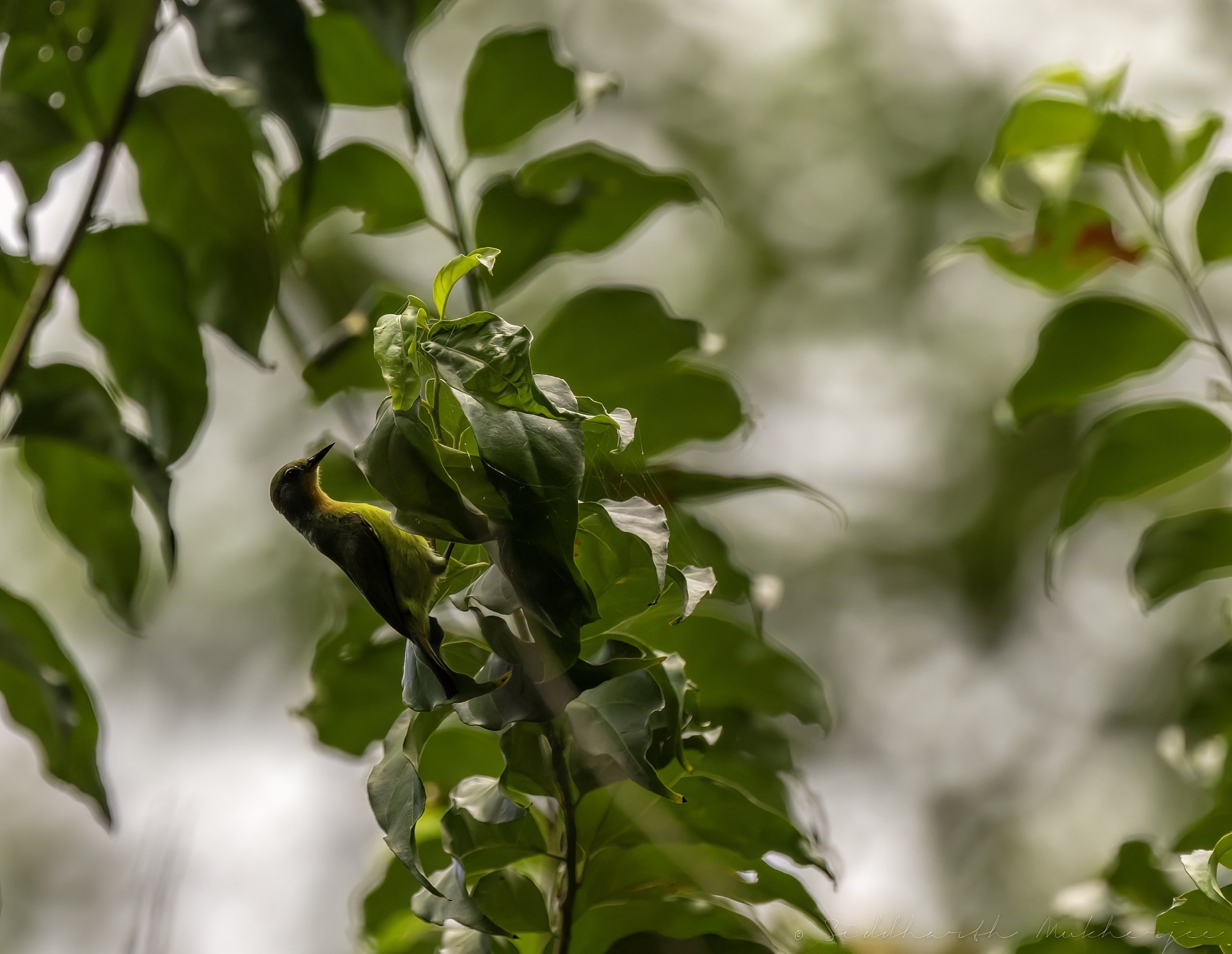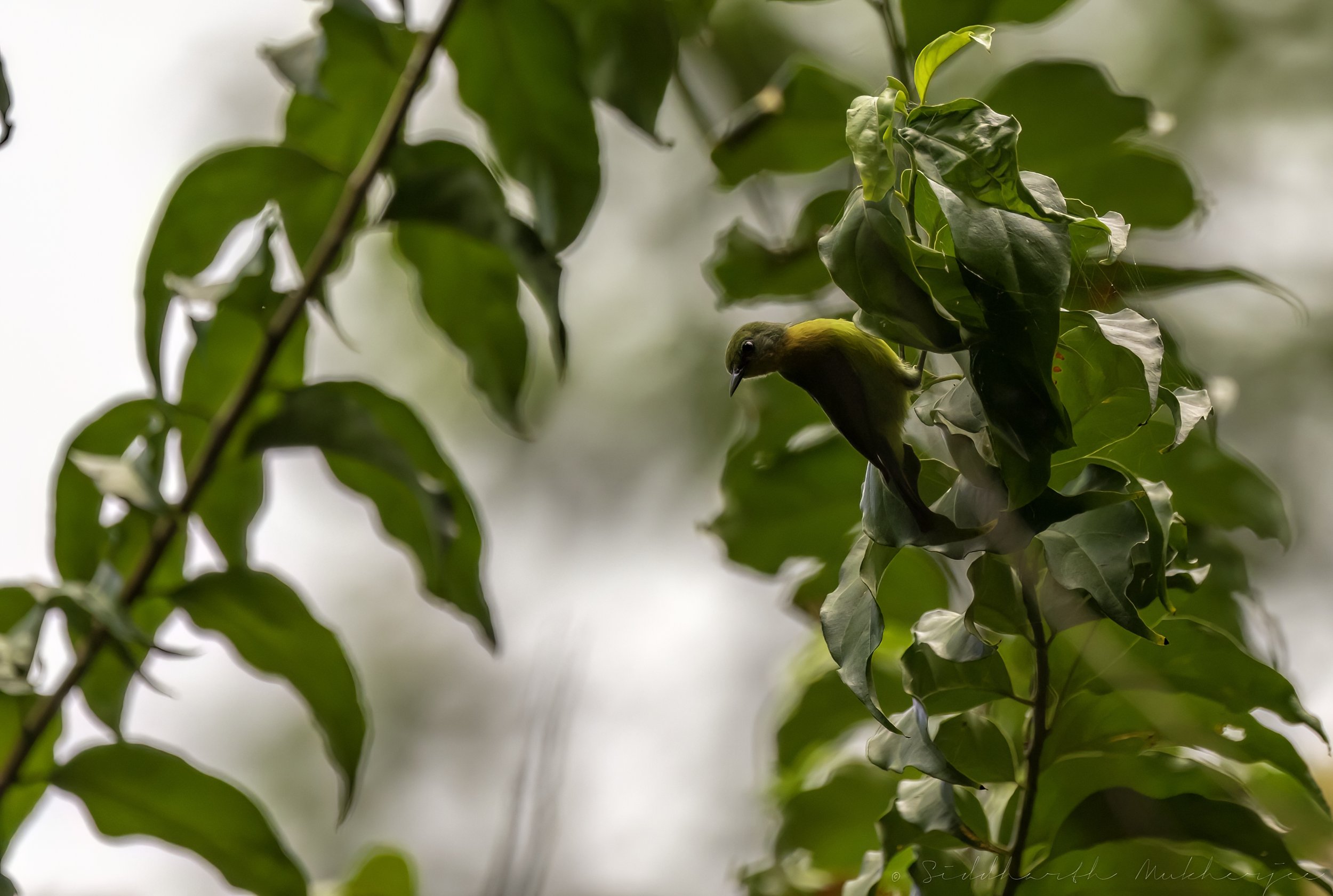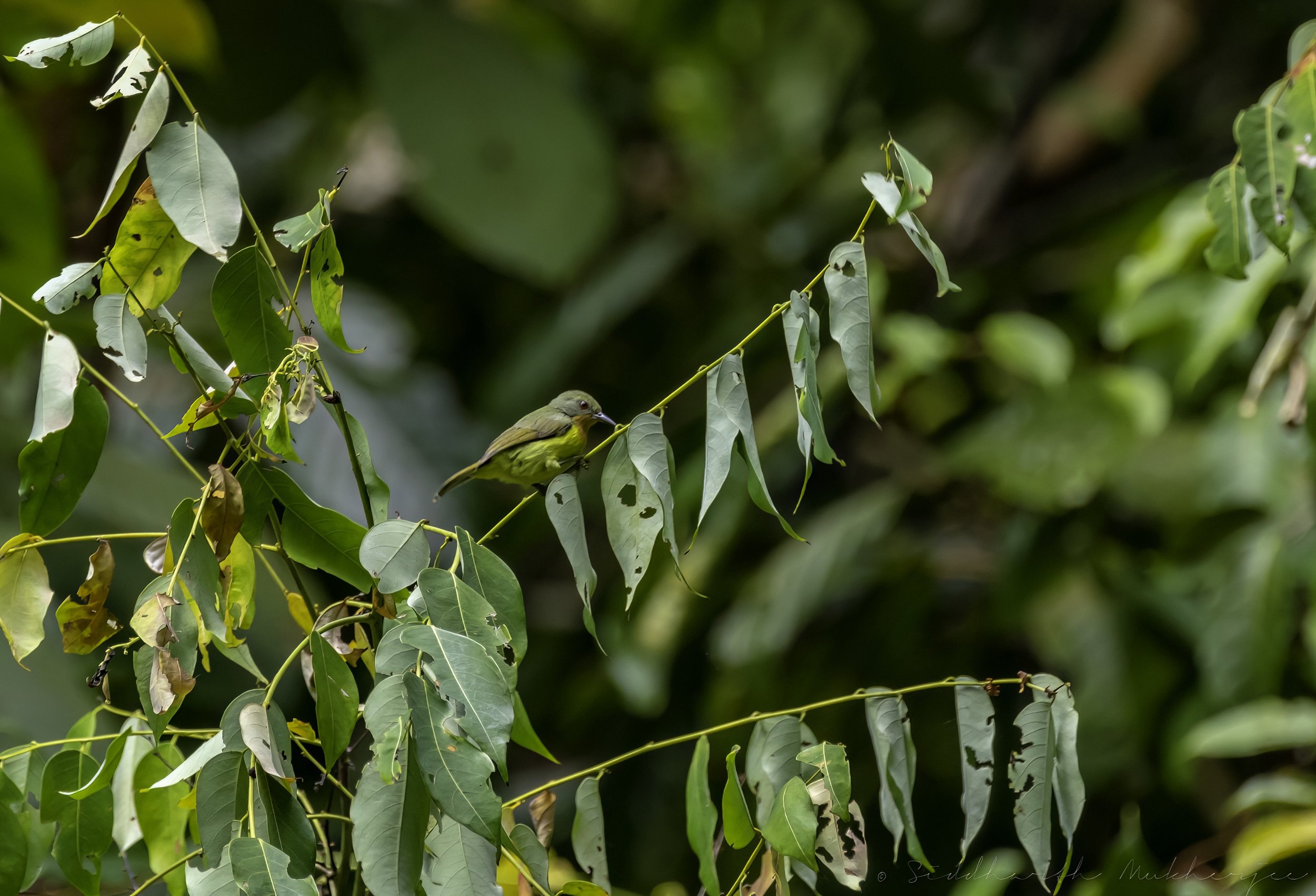Ruby-cheeked Sunbird
Chalcoparia singalensis
Langkawi, Malaysia
After my sojourn in beautiful Bukit Fraser I now head to the emerald island of Langkawi in Malaysia - the jewel of Kedah. This time it was in search of the elusive Ruby-cheeked Sunbird - a tiny sunbird with a short sharp bill and the unmistakeble metallic green upperparts, wine-red cheeks, and bright orange throat and chest of the male. The female is considerably less distinctive, but do note her size, bill shape, and bright orange throat. The Ruby-cheeked sunbird is found in forests, forest edges, and gardens ranging from lowlands up into hilly areas, typically foraging actively in upper levels of trees. But, as always, a little bit about Langkawi first.
Officially known as Langkawi, the Jewel of Kedah (in Malay: Langkawi Permata Kedah), is a district and an archipelago of 99 islands (plus five small islands visible only at low tide) in the Malacca Straits. some 30 km off the coast of northwestern Malaysia. Surrounded by a turquoise sea, the interior of the main island is a mixture of picturesque paddy fields and jungle-clad hills while the shoreline is fringed by powder-fine sand, swaying coconut trees and dense mangroves. The islands are a part of the state of Kedah, which is adjacent to the Thai border; the islands are a few kilometres south of Ko Tarutao. On 15 July 2008, the then-sultan of Kedah, Abdul Halim Mu'adzam Shah, conferred the title of Langkawi Permata Kedah (meaning 'Langkawi, the Jewel of Kedah') upon the island as part of his golden jubilee as an affirmation of Kedah's ownership over the island.
Ruby-cheeked Sunbird (Male)
Ruby-cheeked Sunbird (Female)
The island of Langkawi was recorded in history by various travellers to the region. It was called Lóngyápútí in the 14th century by the Yuan dynasty traveller Wang Dayuan. When the Ming dynasty admiral Zheng He visited the region, the island was marked as Lóngyájiāoyǐ, on his map. In the 15th century, it was known to the Acehnese as Pulau Lada ('Pepper Island'). In 1691, the French general Augustin de Beaulieu recorded going to the island of "Lancahui" (Langkawi) to buy pepper, and de Beaulieu was required to obtain a license from Kedah's heir apparent then in Perlis before the penghulu or chief of Langkawi would sell pepper to him. The name Langkawi is thought to have existed by the early 15th century, although in the 16th century the island of Langkawi was also marked on maps variously as Langa, Langka, Lansura, and Langapura. There are many suggestions for the origin of the name of Langkawi. According to one interpretation, Langkawi means island of the reddish-brown eagle, a Brahminy Kite in colloquial Malay. The Malay word for eagle is helang (colloquially shortened to lang), and kawi is a red stone used as a chalk to mark goods. This interpretation was used to create the landmark sculpture of an eagle as the symbol of Langkawi at Dataran Helang (Eagle Square) in Kuah, the largest town on the island.
Some believed that Langkawi is the same as, or related to, the Lanka or Langkapuri mentioned in the epic Ramayana as the city of King Ravana. This ancient name Lanka (or Lankapura and Lankapuri) is found in Indian literature from an early period although the identification of the original Lanka is not certain. Puri or puram in Sanskrit means a town or city. The name Langkawi is also thought to be related to Langkasuka, an old kingdom believed to have links with Kedah. Some also thought that Langkawi means "many beautiful islands", langka being a Sanskrit word meaning "beautiful" while wi means "many".
The northwest of the main island which is about 25 kilometres (16 mi) from north to south and slightly more from east to west. The coastal areas consist of flat, alluvial plains punctuated with limestone ridges. Two-thirds of the island is dominated by forest-covered mountains, hills, and natural vegetation. On 1 June 2007, Langkawi Island was given a World Geopark status by UNESCO. Three of its main conservation areas in Langkawi Geopark are Machincang Cambrian Geoforest Park, Kilim Karst Geoforest Park, and Dayang Bunting Marble Geoforest park (Island of the Pregnant Maiden Lake). These three parks are the most popular tourism area within Langkawi Geopark. In 2014, UNESCO issued a "yellow card" warning threatening the status of the Geopark.
The island's oldest geological formation, the Machinchang Formation, was the first part of Southeast Asia to rise from the seabed in the Cambrian more than half a billion years ago. The oldest part of the formation is observable at Teluk Datai to the northwest of the island, where the exposed outcrop consists of mainly sandstone (quartzite) in the upper parts and shale and mudstone in the lower parts of the sequence. The other known example, the Jerai Formation, emerges near the west coast of Kedah on the mainland (peninsula). Geologically, all these rocks are in the Western Belt of peninsular Malaysia, which is thought to be part of the Shan–Thai Terrane.
‡‡‡‡‡
The dense mangroves of the Kilim Karst Geoforest Park
Ruby-cheeked Sunbird
The Ruby-cheeked Sunbird (Chalcoparia singalensis) is a species of sunbird in the family Nectariniidae. It is a tiny sunbird with a short sharp bill. The male’s metallic green upperparts, wine-red cheeks, and bright orange throat and chest are unmistakable. While the female is less distinctive, but note her size, bill shape, and bright orange throat. These tiny sunbirds are found in forests, forest edges, and gardens from lowlands up into hilly areas, typically foraging actively in upper levels of trees.
The ruby-cheeked sunbird was formally described in 1789 by the German naturalist Johann Friedrich Gmelin in his revised and expanded edition of Carl Linnaeus's Systema Naturae. He placed it with the wagtails in the genus Motacilla and coined the binomial name Motacilla singalensis. Gmelin erroneously specified the type locality as Ceylon (now Sri Lanka) where the species does not occur. The locality was designated as Malacca on the Malay Peninsula by the American ornithologist Harry C. Oberholserin 1912. Gmelin based his account on the "green warbler" from the East Indies that had been described and illustrated in 1776 by the English naturalist Peter Brown. The ruby-cheeked sunbird is now the only species placed in the genus Chalcoparia that was introduced in 1850 by the German ornithologist Jean Cabanis. The genus name is from Ancient Greek khalkoparēos meaning "with cheeks of bronze". The specific epithet is from the erroneous type locality, Sri Lanka.
Eleven subspecies are recognised:
C. s. assamensis (Kloss, 1930) – east Himalayas and Bangladesh to south China, north Thailand and north Myanmar.
C. s. koratensis (Kloss, 1918) – east Thailand and Indochina
C. s. internota (Deignan, 1955) – south Myanmar to north Malay Peninsula (which is where I spotted this bird.)
C. s. interposita (Robinson & Kloss, 1921) – central Malay Peninsula
C. s. singalensis (Gmelin, JF, 1789) – south Malay Peninsula
C. s. sumatrana (Kloss, 1921) – Sumatra, Lingga Islands and Belitung (east of Sumatra)
C. s. panopsia (Oberholser, 1912) – islands west of Sumatra
C. s. pallida (Chasen, 1935) – Natuna Islands (northwest of Borneo)
C. s. borneana (Kloss, 1921) – Borneo
C. s. bantenensis (Hoogerwerf, 1967) – west Java
C. s. phoenicotis (Temminck, 1822) – central, east Java
The Ruby-cheeked Sunbird is found in Bangladesh, Bhutan, Brunei, Cambodia, China, India, Indonesia, Laos, Malaysia, Myanmar, Nepal, Thailand, and Vietnam. Its natural habitats are subtropical or tropical moist lowland forest, subtropical or tropical mangrove forest, and subtropical or tropical moist montane forest.
The race C. s. assamensis occupies open forest in Nepal, Bhutan, India, and Bangladesh (Cheke & Mann 2020). In West Bengal, it occurs in the foothills of the Himalaya and in the adjoining plains of northern West Bengal (Baidya et al. 2017), particularly in Darjeeling, Kalimpong, Jalpaiguri, Alipurduar, and Koch Bihar districts (eBird 2021).
Ruby-cheeked Sunbird - Range & Distribution in India
Ruby-cheeked Sunbird - Range & Distribution in Arunachal Pradesh
This species has an extremely large range, and hence does not approach the thresholds for Vulnerable under the range size criterion (Extent of Occurrence <20,000 km2 combined with a declining or fluctuating range size, habitat extent/quality, or population size and a small number of locations or severe fragmentation). The population trend appears to be stable, and hence the species does not approach the thresholds for Vulnerable under the population trend criterion (>30% decline over ten years or three generations). The population size has not been quantified, but it is not believed to approach the thresholds for Vulnerable under the population size criterion (<10,000 mature individuals with a continuing decline estimated to be >10% in ten years or three generations, or with a specified population structure). For these reasons the species is evaluated as Least Concern.
‡‡‡‡‡
‡‡‡‡‡
Related Posts





















